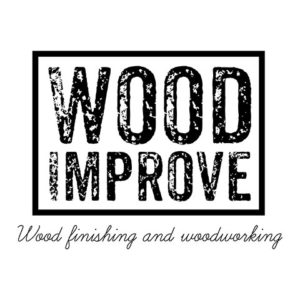I have salvaged timber and offcuts of every type, shape, and size in my workshop. Selecting the suitable timber for my next project depends on the look and strength I require, its weight, whether it’s close-grained or fine-grained. Will I be using it outside or for internal use only? Do I need hardwood or softwood?
In this article, I’ll run you through a range of timbers commonly used on projects, explain the characteristics of each one and the uses for which it is best suited.
I’ll also discuss an engineered wood you’ll encounter in your hardware store and discuss its pros and cons.
Pine
The old standby. When I want to knock something up in a hurry, pine is often a fallback. A softwood pine is light and easy to work with. It has become commonplace for woodworkers worldwide as it grows quickly and, therefore, is farmed commercially and sustainably in plantations.
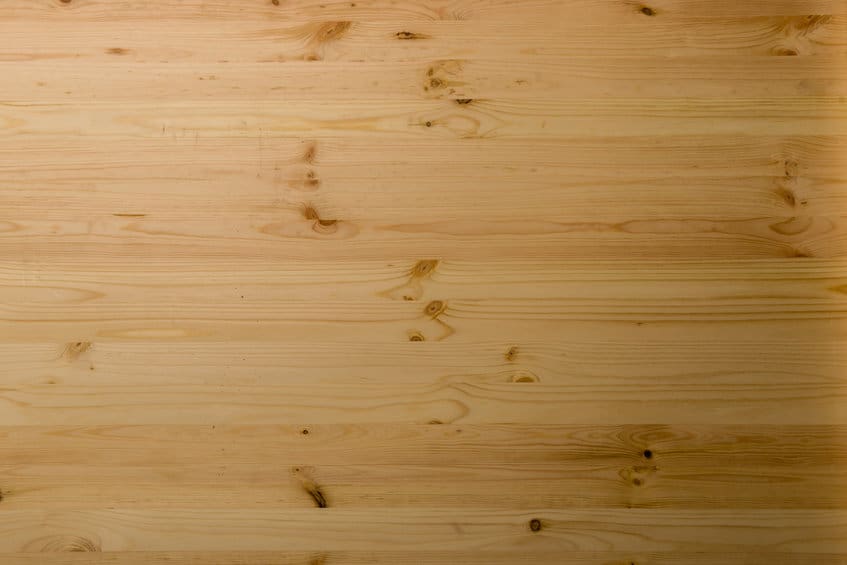
Lower-grade pine bought for framing can warp and twist over time and will sometimes have knots. The knots interrupt the grain of the timber and can cause weakness if you intend it to carry loads.
The timber can also be resinous, which can clog tool blades and make staining and painting difficult. Yet, if you buy good quality pine, it has a lovely smell, and it looks great. Often used for lining houses, it takes on a nice warm, honey glow when sealed.
It is yellowish-brown in color with well-marked, reddish-brown growth rings. Pine can be left natural and sealed, stained, or painted. Avoid resinous pine if you intend to apply a surface finish.
Note: If you wish to use pine externally or for fencing and fence posts, it must be treated. Treated pine has had a chemical called Tanalith soaked into it under pressure, and that’s why you may hear people talk about ‘tanalized timber.’ Once treated, the wood takes on a soft green color and becomes more resistant to rot and insects.
Pros:
- Light
- Soft
- Easy to work
- Paints and stains easily if dry
- Attractive smell and appearance
- Cheap
Cons:
- It’s not pest or rot-resistant unless pressure treated
- Can warp or twist if left to weather when unconstrained
- Can be resinous, making working and sealing difficult
Used for:
Commonly used for internal uses such as shelving, tables, framing, or lining walls. If used outside, it must be pressure treated to increase pest and rot resistance. When treated, you can use it for decking or fencing.
Cedar
Another light timber, cedar is softwood, and a beautiful wood to look at and work with. Naturally pest and rot-resistant, it comes in two types, white and red cedar. Both have a lovely and distinctive smell, with the white cedar weathering to a silvery grey, while the red becomes a lovely deep red. Both types take stain and paint well, although white cedar gives a more consistent finish.
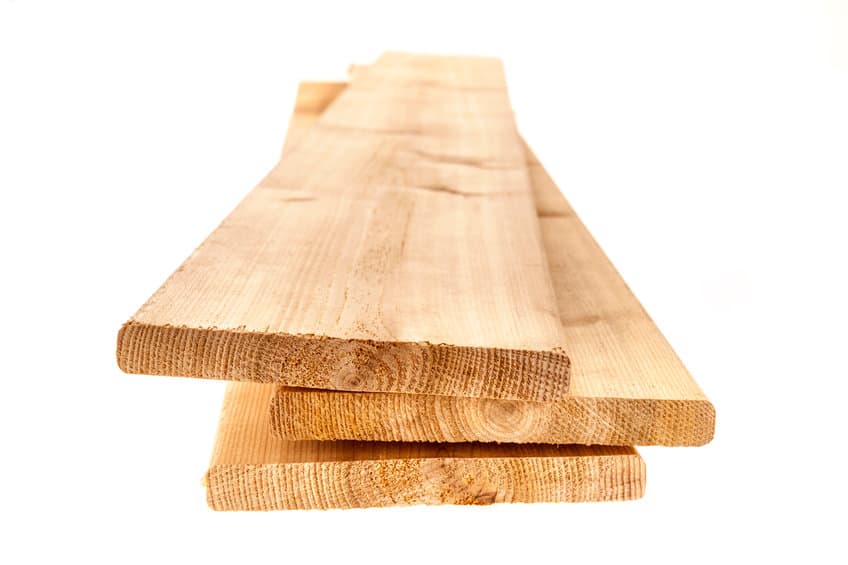
Given cedar’s resistance to rot and pests, it’s used internally or externally. It’s easy to work and light to handle.
Just be aware that cedar has naturally occurring oils to which some people may develop allergies. For this reason, do not use cedar when there is prolonged exposure to the skin. Similarly, while western red cedar is safe to use in contact with food, other cedars are less so, with some poisonous.
Pros:
- Lovely aroma
- Great color
- Weathers well and is pest & rot resistant
- Easy working
- Repels bugs, termites, and moths
Cons:
- More expensive than pine
- Can cause allergies
- Some types can be resinous
Used for:
Houses are clad in cedar, while decks, fences, sheds, and beehives are constructed from it. It doesn’t do well when used in the ground, however.
Internally it is often used to line areas that hold clothes, such as a closet, chest of drawers, or a clothes chest. Those wooden mothballs for clothes that you see in the shop? They’re cedar.
Oak
A popular hardwood, oak can be red or white in appearance, with an attractive straight grain. Red oak is the more common oak you’ll find in a hardware store and is softer to work than the white varieties. The white oaks are harder wearing and are often used in flooring. Both varieties are dense and heavy to work with.
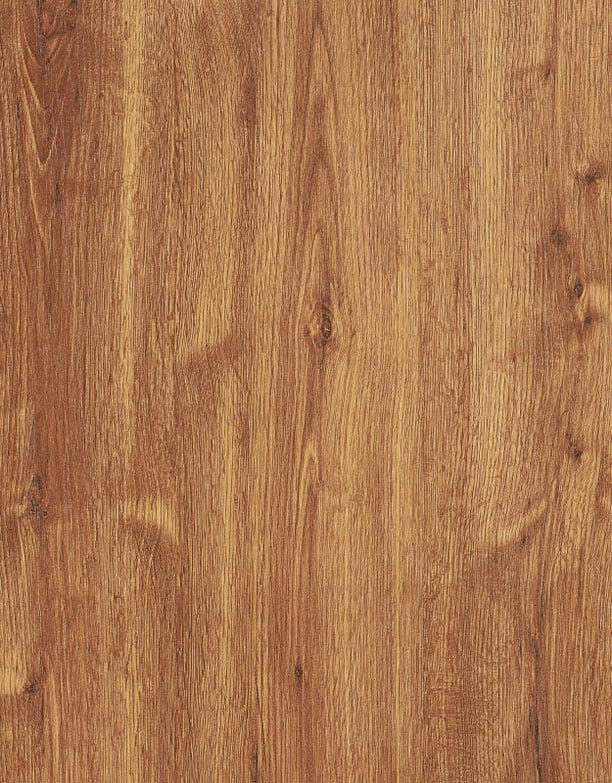
A robust timber, oak is suitable for bending, hence its use in boat building through the centuries. It’s also used extensively in making barrels for wine or whisky and is prized highly for furniture and flooring.
Oak is moisture resistant, so it can be used outside when appropriately treated. Bear in mind that oak will shrink and swell with the addition or removal of moisture. Oak takes stain well, but the distinctive grain can take a few coats of paint before disappearing.
Pros:
- Strong
- Bendable
- Beautiful grain and color
- Moisture resistant
Cons:
- Expensive
- Heavy and dense, so harder to work
Used for:
Barrels, flooring, boat building, tool handles, fine furniture, and veneers.
Ash
With a lovely white color, flecked with darker grain, ash is similar to oak, although at a lower price. A hardwood, ash is straight-grained and durable, with the bonus of being easy to work with.
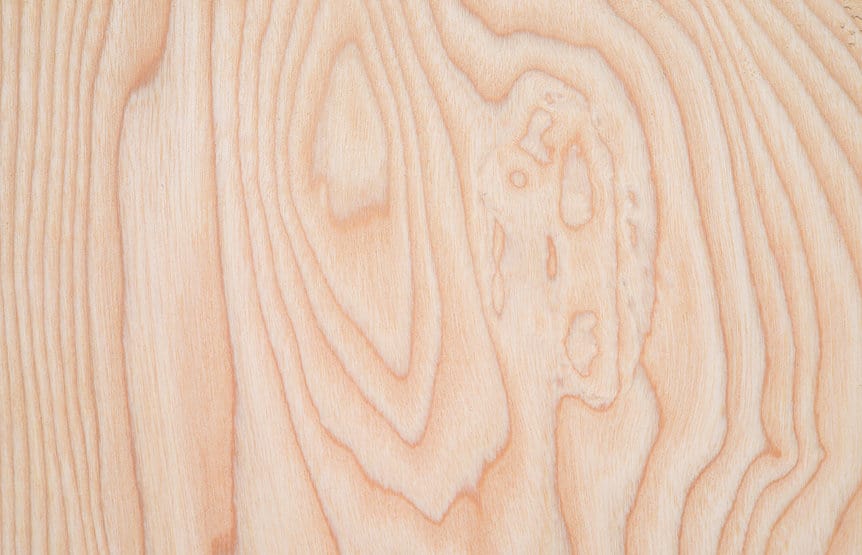
As a strong and flexible timber, ash responds well when steam-bending and is often used when building staircases. It stains and paints very well. Due to its good shock resistance and high weight to strength ratio, ash is used for pool cues, baseball bats, and hockey sticks.
Pros:
- Cheaper than oak
- Strong and flexible
- Good shock resistance
- Attractive grain and color
Cons:
- It can be challenging to find
Used for:
Furniture, baseball bats and hockey sticks, veneer, tool handles, flooring.
Birch
A sustainable timber option, birch is a quick-growing hardwood abundant worldwide and therefore a cheaper alternative to the other hardwoods. A strong, attractive wood, birch is small pored and thus finishes nicely when sanded, although it’s not known to stain well, giving blotchy patches. Avoid dark stains, use a pre-stain conditioner and then apply a light stain. Birch will take paint well.
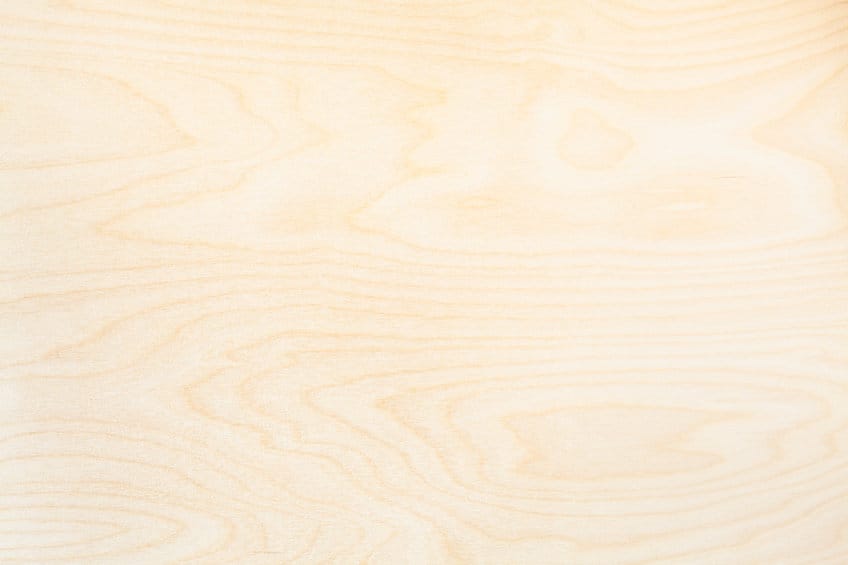
Birch is a dense timber, so it’s heavy. You’ll need sharp tools to work birch and be aware that it can shrink a lot when drying. Most often used as a cheap and readily available substitute for oak.
Pros:
- Cheap
- Readily available
- Dense and strong
- Sustainable
Cons:
- Doesn’t stain well – although it paints nicely
- Needs sharp tooling to work it
Used for:
Highly prized for furniture, veneers, toys, and flooring.
Mahogany
A stunning hardwood, mahogany is a rich red or red-brown color with a straight grain. Grown in Africa, Central & South America, and the West Indies, mahogany is royalty among hardwoods and commands a high price.
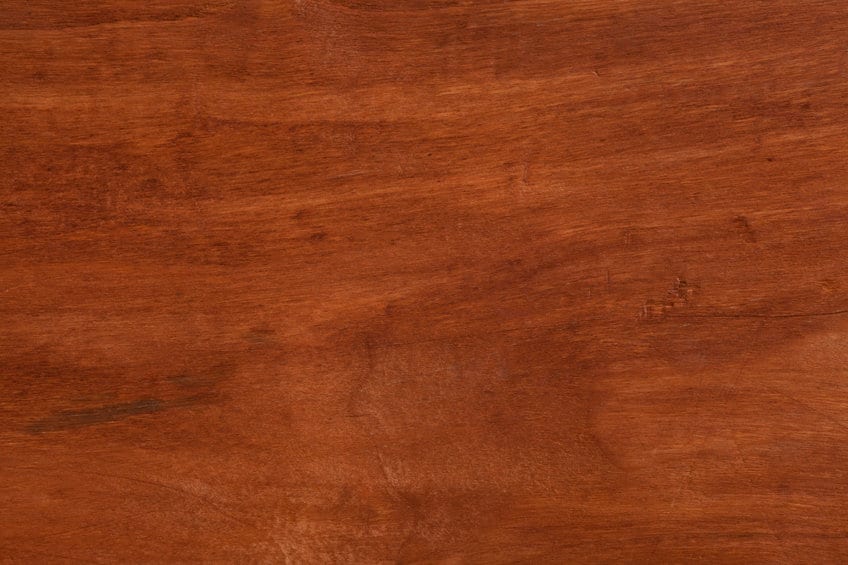
Softer than most other hardwoods, mahogany is a delight to work, finishing well and taking stains easily. It is universally used in high-end furniture, musical instruments, staircases, chests and caskets, and boat-building.
An incredibly dense wood, mahogany is resistant to rot and insects and is dimensionally very stable. It resists warping and shrinking.
Pros:
- Beautiful grain
- Softer hardwood than others, so easy to work
- Strong & durable
- It can be sourced in very wide boards due to the size of the tree
Cons:
- Expensive
- Imported so that it can be difficult to source
Used for:
Musical instrument making, high-value furniture, flooring, chests and caskets, boat-building.
Walnut
A fine-grained dense hardwood, walnut has a lovely chocolate brown color prized for furniture making. Dimensionally stable, with minimal shrinking and warping as it dries, walnut resists moisture, although not insects.
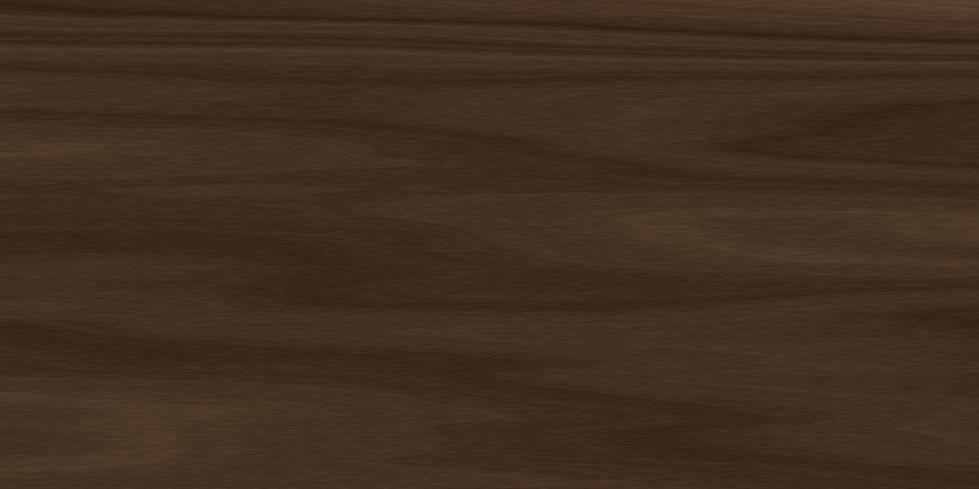
A robust timber, walnut polishes well and takes on a lovely depth of color. It is a wood prized by woodturners for making small, decorative pieces as it machines well and is not as expensive as some other hardwoods. Its fine grain makes it take shocks well; therefore, walnut is often used in gun stocks.
Pros:
- Luxurious color
- Less expensive than other luxury hardwoods
- Dimensionally stable
- Moisture resistant
Cons:
- Not resistant to insects
- Can cause allergies and asthma when being worked
Used for:
Musical instruments, gun stocks, flooring, furniture, woodturning, veneer.
Cherry
Cherry is a hardwood with a fine, dense grain and a color range from blond through to reddish-brown. Prized by woodturners and cabinet makers, cherry finishes exceptionally well, and the color darkens to a nice patina over time.
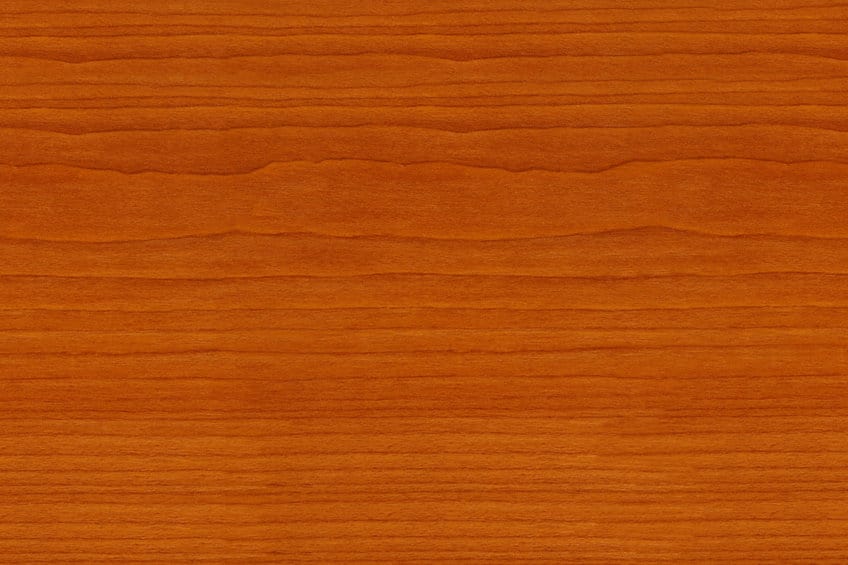
With a fine texture and uniform grain, cherry machines well. The grain can take on tiny black flecks as a result of mineral deposits.
Pros:
- Exceptionally beautiful
- Fine-grain
- Rich color
- Finishes well
- Easy to machine
Cons:
- Expensive
- It can be hard to find
Used for:
Pipe bowls, cabinetry, turned objects, veneer, furniture, musical instruments, paneling, and flooring.
Maple
Hard maple is a dense and tough hardwood with tight, straight grain and a color that can range from cream through to gold, sourced from the Sugar Maple tree. Softer timber is sourced from the Red Maple. Maple wood is smooth and fine to the touch and finishes nicely, but take note that hard maple does not stain well, much like birch.
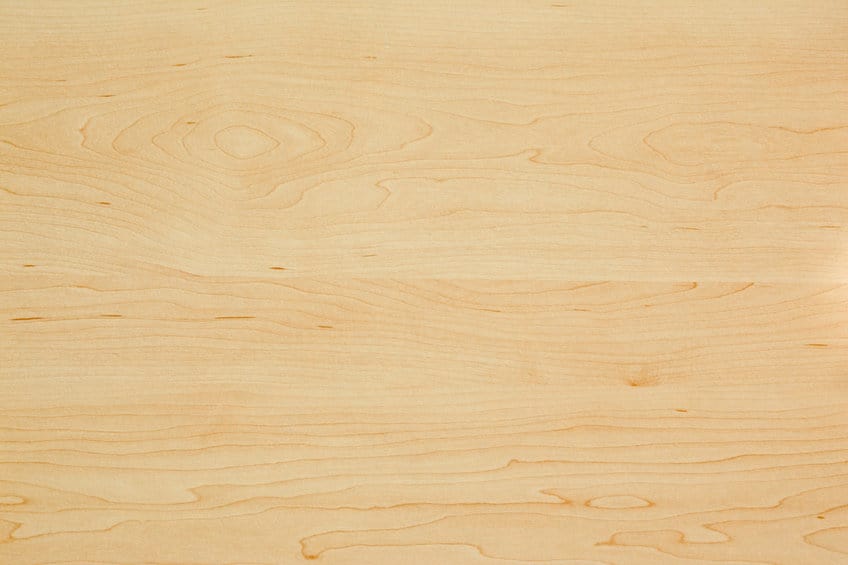
As a moderate hardwood with a light grain, maple is quite durable timber that finishes nicely and is widely used in furniture making.
Pros:
- Red maple timber is easier to work
- Quite durable
- Not expensive
- A common tree species so easy to source
Cons:
- Some Sugar Maple timber can be difficult to work
Used for:
Furniture, butchers blocks, veneer, piano actions. Sugar maple is used for flooring, given its hardness.
Plywood
An engineered wood product, plywood comes as a sheet of veneers bonded with glue under heat and pressure. With the grain of the veneers, or ‘plys’ of the plywood running in different directions in each layer, plywood is extremely strong and dimensionally stable.
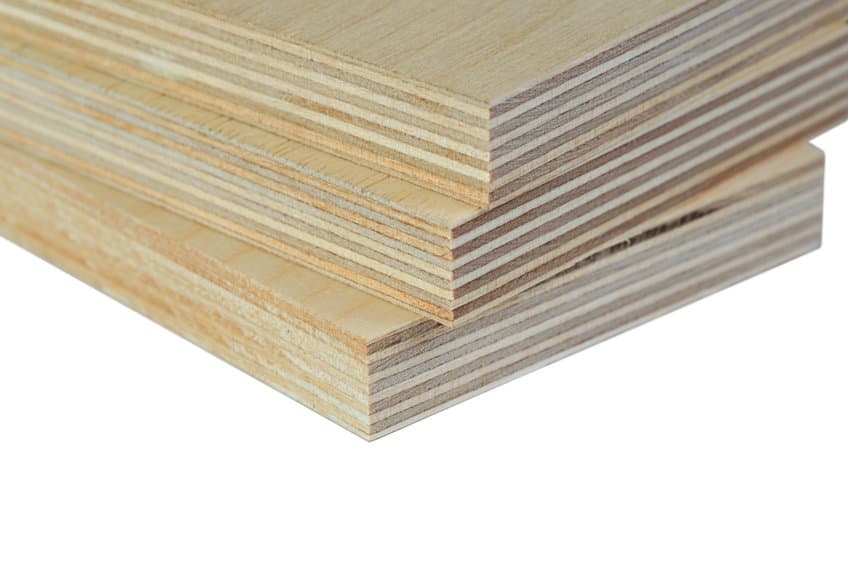
There is a vast range of plywood from which to choose. The lower grade construction plywood is used for bracing or general works, through to plywood with marine glues and high-quality surface veneers to give a water-resistant and high-end finish. Thinner plywood bends well and may be formed into quite complex shapes. Plywood stains and paints well.
Pros:
- Comes in a wide variety of thicknesses
- Dimensionally stable
- Strong
- Can get marine ply for areas of high dampness
- Higher grades of plywood have attractive surface veneers
- Easy to work
- Inexpensive
- Sourced from sustainable plantations
Cons:
- Lower grades will delaminate if subjected to water
Used for:
Boat-building, paneling, furniture, wall lining, sheet-bracing, construction, toys.
In Summary
We’ve covered the most common timber you’ll run across in your hardware store and highlighted the pros and cons of each. There are many timbers to choose from, some of them quite exotic and expensive, but for my money, this selection covers almost every use you may come across in the workshop.
I’ve also tried to emphasize woods that are now farmed and sourced sustainably to ensure the longevity of such a precious resource. I trust the article is helpful, and good luck with your projects.
